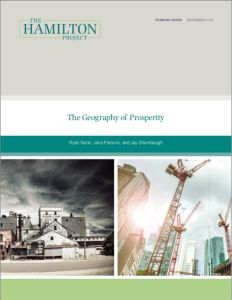Join getAbstract to access the summary!

Join getAbstract to access the summary!
Ryan Nunn, Jana Parsons and Jay Shambaugh
The Geography of Prosperity
Brookings Institution, 2019
What's inside?
Why do some places in the United States offer people more economic opportunity than others?
Recommendation
Income inequality receives a good deal of attention in the media and in academic studies, but geographic inequality – the lesser-known concept that economic opportunity is tied to the place in which a person lives – is just as notable. The Brookings Institution’s Ryan Nunn, Jana Parsons and Jay Shambaugh look into what makes some places in the United States flourish while others lag. Policy experts, economists and anyone interested in exploring inequity through the lens of geography will find that this insightful report sheds new light on a much-debated issue.
Summary
About the Authors
Ryan Nunn, Jana Parsons and Jay Shambaugh are economists at the Brookings Institution’s Hamilton Project.

























Comment on this summary